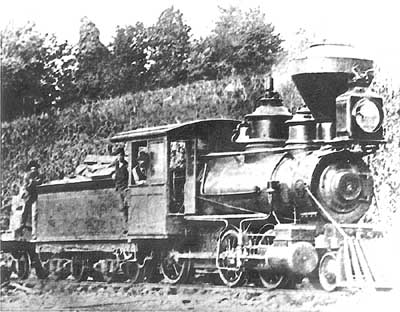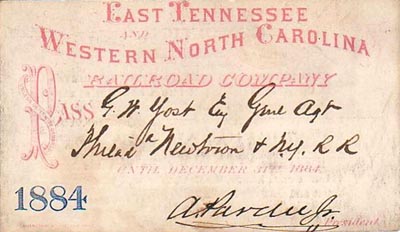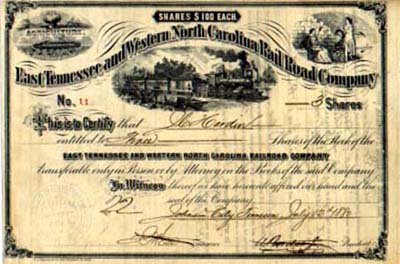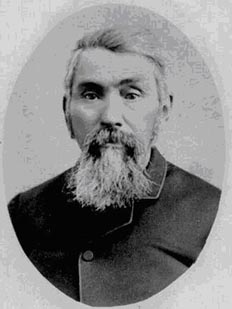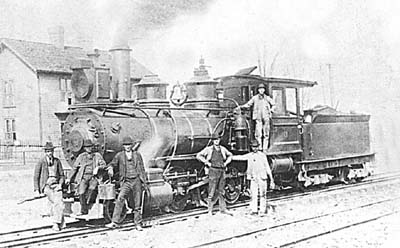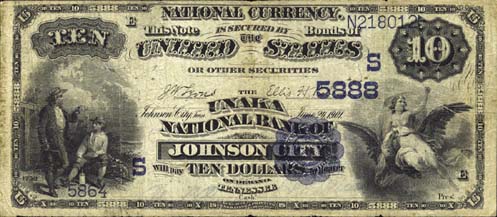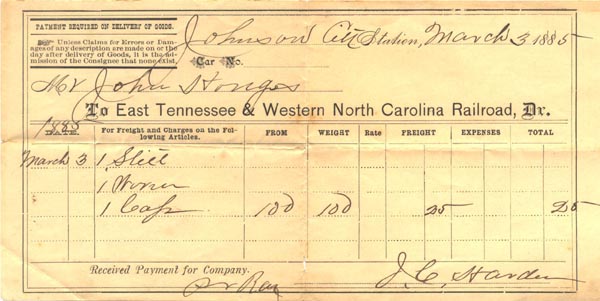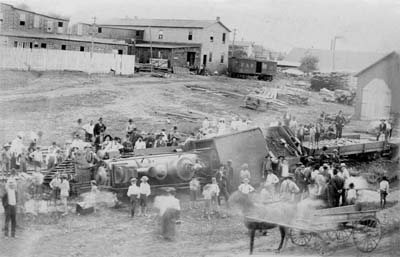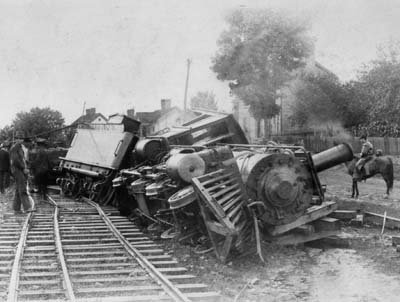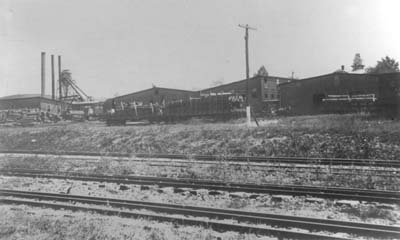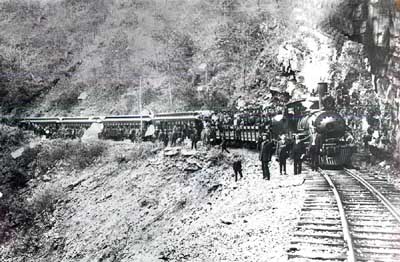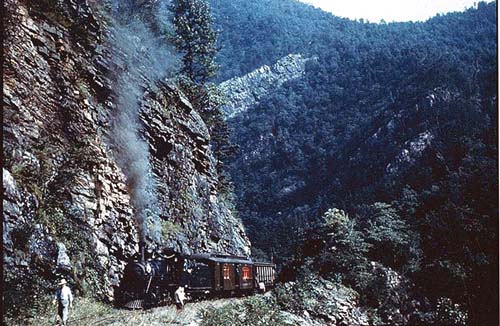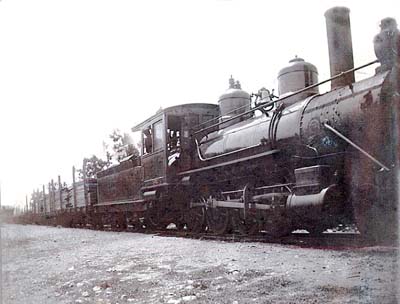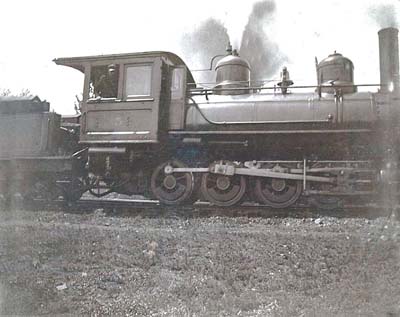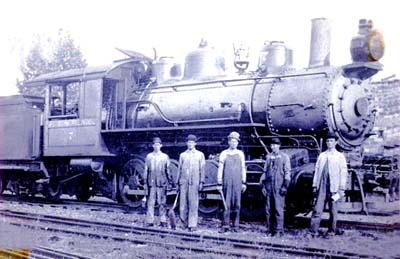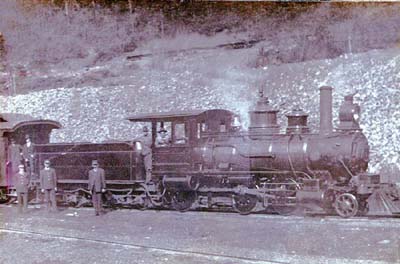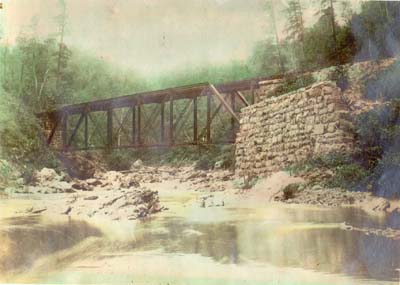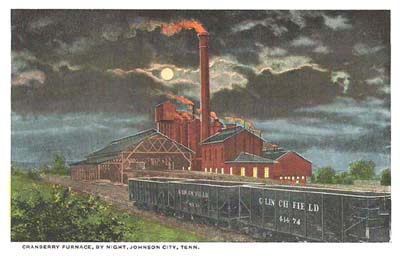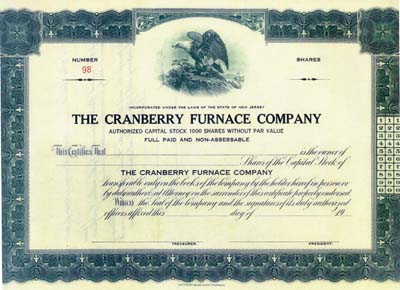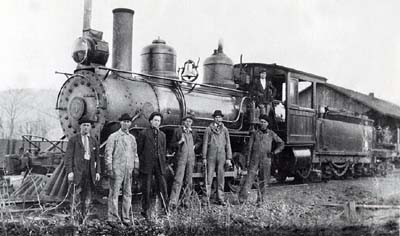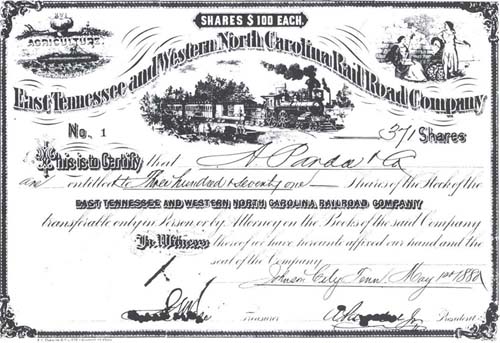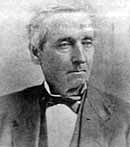Click on each photo to see a larger view. |
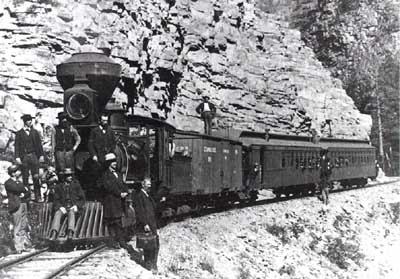
|
| |
|
Date: 1882
|
|
This is supposedly the first passenger train to Cranberry stopped at Pardee Point in the Doe River Gorge. The man with the doctor's bag is Dr. Abraham Jobe, who said in his diaries that he moved to North Carolina "on the first train through". His diaries are available at the Archives of Appalachia at ETSU. That is engine Number 1 when it still burned wood. I think this is in 1882. Notice that the engine has a yard jockey mounted on the front for a decoration. The first three locomotives the ET&WNC owned had names as well as numbers, No. 1 was the "Watauga", No.2 was the "Cranberry", and No. 3 was the "Unaka". All three engines were still on the railroad when Mr. Crumley went to work as a brakeman in 1906. Mr. Crumley had an original print of this shot in his collection but it wound up being "borrowed" and never returned. I made this copy negative in 1972. |
|||
|

